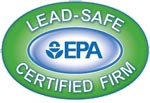Our Work - EPA's Office of Pollution Prevention and Toxics (OPPT) manages programs under the Toxic Substances Control Act (TSCA) (PDF) (106 pp., 263KB, about PDF) (TSCA Summary) and the Pollution Prevention Act (PPA) of 1990 (PDF) (10 pp., 39KB, about PDF) (PPA Summary). Under these laws, EPA evaluates new and existing chemicals and their risks, and finds ways to prevent or reduce pollution before it gets into the environment. We also manage a variety of environmental stewardship programs that encourage companies to reduce and prevent pollution. Read more basic information.
Highlights
August 8, 2012
EPA signed a Significant New Use Rule (SNUR) (PDF) (47 p., 266 kb.) About PDF) under the Toxic Substances Control Act (TSCA) to require companies to report in advance of all new uses of long-chain perfluoroalkyl carboxylic (LCPFAC) chemicals as part of carpets or to treat carpets, including the import of new carpet containing LCPFACs.
EPA also required adding seven perfluoroalkyl sulfonate (PFAS) chemicals to the existing PFAS SNUR (40 CFR 721.9582), and amended that SNUR to include "processing" in the definition of significant new use for PFAS chemicals. Read more.
July 31, 2012
Through its DfE program, EPA has released for comment the draft alternatives assessment "Bisphenol A (BPA) Alternatives in Thermal Paper" (PDF) (492 pp., 6.1 mb.) About PDF). Read more about the BPA Alternatives in Thermal Paper Partnership.
July 30, 2012
Through its DfE program, EPA has released for comment the draft report “An Alternatives Assessment for the Flame-Retardant Decabromodiphenyl Ether (DecaBDE)" (PDF) (812 pp., 10.2 mb.) About PDF). Read more about the Flame-Retardant Alternatives for DecaBDE Partnership.
June 28, 2012
EPA has developed the Endocrine Disruptor Screening Program Comprehensive Management Plan providing strategic guidance to agency personnel and outlining the program's critical activities over the next five years.
June 1, 2012
EPA has identified the 18 Work Plan Chemicals on which risk assessments will be done in 2013 and 2014. Read more.
May 21, 2012
EPA and the National Association for Stock Car Auto Racing (NASCAR) signed a Memorandum of Understanding to help green the sport. Read more.
May 9, 2012
Through its DFE program, EPA released a final alternatives assessment (PDF) (27pp, 397K) identifying eight safer alternatives to nonylphenol ethoxylates (NPE), surfactants widely used in industry and commonly found in consumer products, such as laundry detergents. When released into the environment, NPEs can be persistent and highly toxic to aquatic organisms. Read more about NPE. Read the press release.
March 20, 2012
EPA proposed Significant New Use Rules (SNURs) under the Toxic Substances Control Act to require companies to report all new uses of five groups of chemicals, including in domestic and imported products, to give EPA the opportunity to review and take action, if warranted, to prohibit or limit the activity. Read the press release.
February 8, 2012
Eight companies participating in the 2010/15 PFOA Stewardship Program are on track to meet their commitment to phase out use of long-chain perfluorinated chemicals (LCPFCs) by the end of 2015. View the fifth annual progress reports from the eight companies. Read the press release.
February 7, 2012
Dover Chemical Corporation has agreed to pay $1.4 million in civil penalties for the unauthorized manufacture of chemical substances at two facilities. Read more. Read the press release.
November 28, 2011
EPA reported its progress reviewing and declassifying the identities of chemicals claimed as confidential under TSCA. This two-year effort is part of Administrator Lisa P. Jackson's commitment to increase public access to chemical information. Read the press release.
September 20, 2011
EPA has launched its first ever Greener Products Portal designed to help you navigate the increasingly important and complex world of greener products.
September 19, 2011
Celebrate P2 Week, September 19-25, 2011. This year's theme is "Pollution Prevention a Cornerstone of Sustainability".
August 2, 2011
EPA issued the final Toxic Substances Control Act (TSCA) Chemical Data Reporting (CDR) Rule, previously referred to as the Inventory Update Reporting (IUR) Modifications Rule. The rule requires new and updated exposure information and increases public access to a wide range of information on every day chemicals and limits confidentiality claims by chemical manufacturers. Read the press release.
July 11, 2011
Concerned about potential reproductive and/or developmental toxicity of the additional uses of glymes, EPA has issued a proposal to ensure that it reviews new uses of 14 glymes used in a wide array of consumer products. Read more and read the press release.
July 6, 2011
EPA proposed a new Definition of Solid Waste Rule, which includes the Remanufacturing Exclusion, also known as the Green Engineering Exclusion. Read more and read the press release.
June 20, 2011
For the 16th year, EPA recognized pioneering green technologies that are preventing pollution and helping the United States move toward sustainability. Read more.
June 8, 2011
To increase public access to chemical information, EPA has declassified the identities of more than 150 chemicals contained in 104 health and safety studies that were previously claimed confidential. Read more, and read the press release.
June 1, 2011
EPA's National Tribal Toxics Committee (NTTC) will hold its first meeting in Washington, D.C., June 1-2, 2011. The committee was established to engage tribes and provide an opportunity for greater input on issues related to chemical safety and pollution prevention. Read more and read the press release.
April 14, 2011
As part of the Earth Day 2011 celebrations, EPA is announcing that more than 2,500 products now carry the DfE label. EPA is also announcing the new requirement that manufacturers with products that bear the DfE logo must disclose their ingredients to consumers. Read more about DfE updated Standard for Safer Products.
April 13, 2011
EPA released action plans to address potential health risks from the chemicals methylene diphenyl diisocyanate (MDI) and related compounds and toluene diisocyanate (TDI) and related compounds, which are widely used in sealants, adhesives and coatings. Read more.
February 10, 2011
EPA notified five companies that the identities of chemicals in health and safety studies submitted as confidential are not eligible for confidential treatment, an action that is part of the Agency's continuing efforts to increase transparency related to TSCA and provide greater access to chemical information.
Read the press release.
December 22, 2010
EPA has created a new Chemical Data Access Tool to find chemical information submitted to the Agency under the Toxic Substances Control Act. Read more.
December 21, 2010
EPA is forming a new tribal committee to provide tribes with an opportunity for greater input on issues related to toxic chemicals and pollution prevention.
November 4, 2010
EPA has denied a petition calling for a ban on the manufacture, use and processing of lead in fishing gear. Read more information about the petition, and EPA's response (PDF) (1 p, 409 KB, About PDF).
October 21, 2010
EPA announced that it signed a September 25, 2010, memorandum of understanding (PDF) (5pp, 1.63M, About PDF) with four other federal agencies formally establishing the Economy, Energy and Environment Initiative (E3) to help communities become more efficient, competitive and sustainable. Read the press release.
August 27, 2010
EPA has denied a petition calling for a ban on the manufacture, use and processing of lead in ammunition. Read more information on the petition, and EPA's response (PDF) (1 p, 234 KB, About PDF).
August 18, 2010
Action on Chemicals - EPA has released action plans to address the potential health risks of benzidine dyes, hexabromocyclododecane (HBCD) and nonylphenol (NP)/nonylphenol ethoxylates (NPEs). The chemicals are widely used in both consumer and industrial applications, including dyes, flame retardants, and industrial laundry detergents.
August 11, 2010
EPA is proposing its IUR Modifications Rule that would require electronic reporting and expanded manufacturing, processing, and use information. The 60-day comment period will begin upon publication in the Federal Register. Read the pre-publication version (PDF) (113 pp. 262 kb, about PDF), the press release and more about the proposal.
August 3, 2010
The American Bird Conservancy, the Association of Avian Veterinarians, and a number of other groups submitted a petition to EPA under Section 21 of the Toxic Substances Control Act (TSCA) asking EPA to "prohibit the manufacture, processing, and distribution in commerce of lead for shot, bullets, and fishing sinkers." Read more.
July 6, 2010
A rule (PDF) (18 pp., 121 KB, about PDF) takes effect today that will increase protections against lead-paint poisoning by eliminating the ability of owner-occupants of older housing to "opt-out" of having their contractors follow lead-safe work practices. Read the press release.
June 21, 2010
EPA Honors Presidential Green Chemistry Challenge Award Recipients. For the 15th year, EPA is recognizing chemical technologies developed by leading researchers and industrial innovators making significant contributions to pollution prevention in the United States.
May 27, 2010
In another action to increase the public's access to chemical information, EPA plans to generally deny claims of confidentiality for the identity of chemicals in health and safety studies filed under the TSCA, except in specified circumstances.
May 17, 2010
As part of Administrator Lisa P. Jackson’s commitment to increase public access to information on chemicals, EPA has added more than 6,300 chemicals and 3,800 chemical facilities regulated under the Toxic Substances Control Act (TSCA) to EPA's public database called Envirofacts. Read the press release.
April 23, 2010
Three new actions to prevent lead paint poisoning were announced: (1) a final rule to apply lead-safe work practices to all pre-1978 homes, effectively closing an exemption that was created in 2008. (2) A notice of proposed rulemaking to require dust-wipe testing after most renovations and provide the results of the testing to the owners and occupants of the building. (3) An advance notice of proposed rulemaking to announce EPA's intention to apply lead-safe work practices to renovations on public and commercial buildings. Read more about these actions.
April 20, 2010
EPA joined with the Coalition to End Childhood Lead Poisoning, the U.S. Department of Housing and Urban Development, and the Ad Council to sponsor a public service announcement advertising campaign to raise awareness of the dangers of lead poisoning to children. The ads, in English and Spanish, urge viewers to visit the campaign Website or call the hotline: 1-800-424-LEAD to learn more. Read the press release.![]()
April 8, 2010
Expecting more than 125,000 renovators to be trained in lead-safe practices by the April 22 deadline, EPA announced it is on target to implement a major lead poison-prevention rule aimed at protecting millions of children. Read our fact sheet and press release.
April 4, 2010
Green electronic buying and practices achieved major greenhouse gas emissions reductions in FY 2009. The Federal Electronics Challenge Partners, including EPA and 17 other federal agencies and facilities, purchased greener electronics, improved operation and maintenance of office electronics, and reused or recycled equipment. This reduced greenhouse gas emissions by 46,259 metric tons of carbon, the equivalent to removing 31,000 passenger cars from the road for one year. FEC 2009 Program Accomplishments Report (4 pp, 109 KB, About PDF).![]()
![[logo] US EPA](https://cybercemetery.unt.edu/archive/oilspill/20120925020243im_/http://www.epa.gov/epafiles/images/logo_epaseal.gif)


